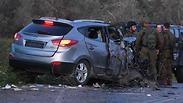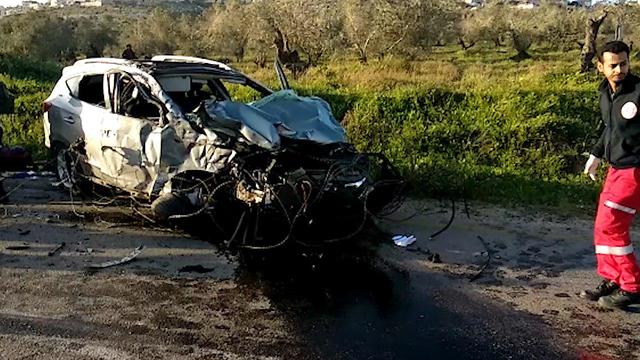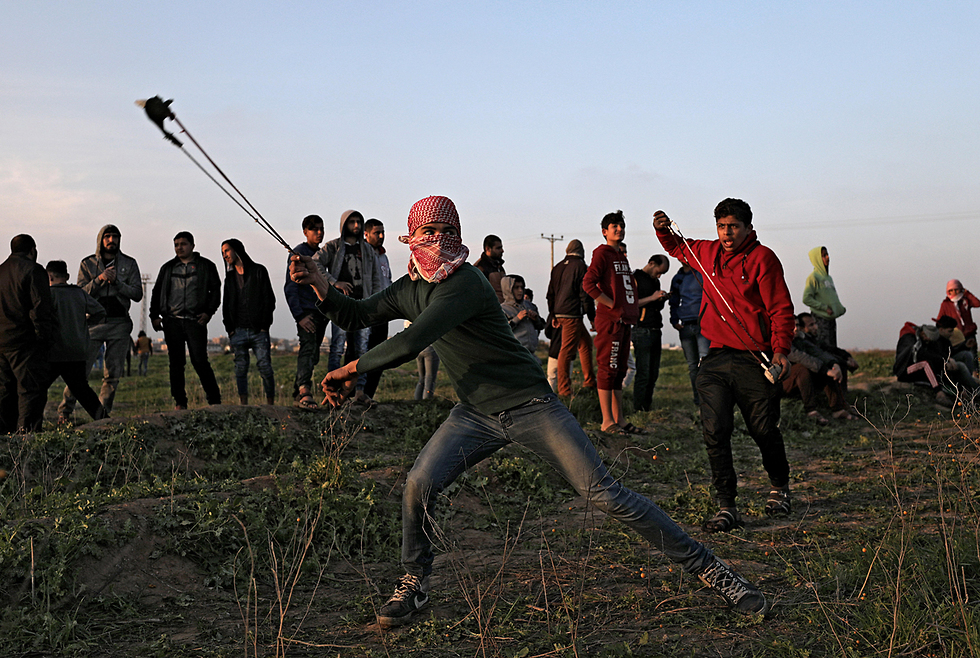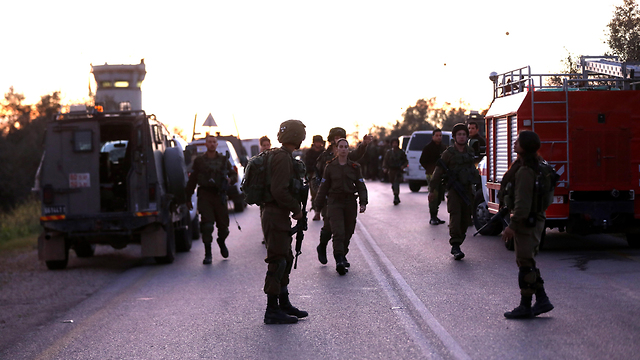For a few days now that Hamas and Islamic Jihad have been calling from their headquarters in the strip for a day of rage in Gaza and Judea and Samaria. The reason for this day of rage - 100 days to US President Donald Trump's declaration of Jerusalem as Israel's capital.
Hamas has been trying for a while now to leverage different events on the ground to incite violence and undermine the stability both on the Gaza border and in Judea and Samaria in the hopes this would help it escape its diplomatic isolation and its inability to deal with the social and economic distress of the Palestinians in the Gaza Strip, where it rules.
By inciting unrest and calling for rioting and terror attacks, Hamas is trying to threaten both the Palestinian Authority and Israel, to pressure them to change their policies towards it and capitulate to its demands.
At the same time, Hamas is working to avoid greater escalation on the Gaza border, which could prompt the IDF to launch a large-scale military campaign against the terror group. Inciting unrest is used by Hamas as an alternative to terror activity from the strip that its leaders fear could lead to escalation.
Easy prey for incitement
This incitement is being heard by the Palestinian youth, at least 40 percent of whom are unemployment and many of whom lost any hope of changing their situation, both politically and socially. Add to that the internal power struggles in the Palestinian Authority ahead of the succession battle after Abbas is gone, and the failure of the reconciliation between Fatah and Hamas - and you get confused and bitter young Palestinians, who are easy prey for incitement on social media and in traditional Hamas and Islamic Jihad media bodies.
The murderous terrorist from Barta'a, who rammed into four soldiers, killing two of them and wounding two others, follows two shooting attacks in the Binyamin region earlier this week, which both ended with no casualties.
Preceding these attacks were violent clashes between Palestinians and Yitzhar settlers. So far, it remains unclear who was responsible for the clashes last weekend, but a Palestinian man was killed as a result, and we know too well the explosive chain of events such deaths drag in their wake.
The IDF and Shin Bet are able to control and neutralize the violent unrest in Judea and Samaria thanks to the combination of intelligence produced mostly from social media and the internet at large, and a smart policy that makes a distinction between terrorists and those conducting terror activity and the general Palestinian population.
However, it has recently become clear the economic situation in Judea and Samaria is deteriorating. The economic growth in recent years has declined and gave way to a similar rate of unemployment to that in Gaza - some 40 percent. This situation has a bad effect, and no policy, as smart as it may be, could prevent the youths from eventually going out onto the streets, sometimes inspired by or under the order of the Palestinian Authority, which does nothing to stop them.
Where soldiers are most exposed
All of these elements eventually come face-to-face with IDF soldiers carrying out their missions in the territories. The soldiers hurt in Friday's ramming terror attack, which could definitely be said to have been inspired by Hamas's incitement, were there to create deterrence and show military presence on the roads.
This force - like hundreds of others patrolling the main roads of Judea and Samaria, especially in areas near Israeli settlements - is meant to deter stone- and Molotov cocktail-throwers. The very presence of the IDF patrols along roads serves to minimize the amount of attacks on Israeli vehicles driving in the area.
But the IDF knows this kind of car ramming attacks and the dangers they pose all too well. There have been dozens such incidents since 2015. Car ramming is a weapon for all intents and purposes and should be treated as a military measure being used mostly against IDF fighters.
The roads are where patrolling IDF soldiers are the most exposed and vulnerable, which is why each patrol should have at least one member who is constantly scouting the rear to alert his friends to attacks that might come from unexpected directions, and mostly to car ramming attacks. This way, if the need arises, the soldier protecting the patrol's rear would be able to neutralize the danger in advance.
In Friday's attack, the terrorist was not neutralized on time, and so the circumstances behind the incident must be thoroughly investigated and, if necessary, the IDF should further emphasize the procedures to patrolling along roads and add measures that would allow the soldiers moving exposed in the field to deal with car ramming attacks in the future.





















